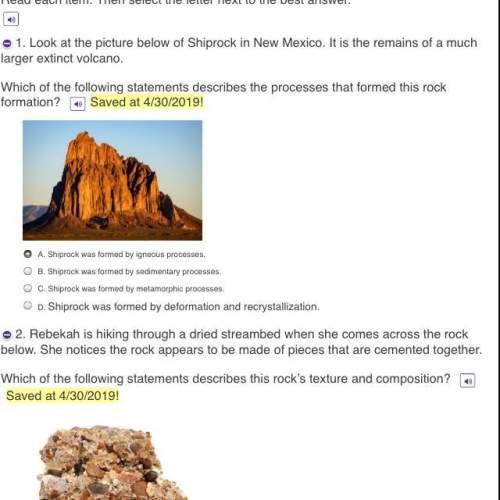
Biology, 18.03.2021 01:20 uh8hardiek
BigMoney Inc. has also had a major spill of inorganic H_2 that contaminated the soil around their plant. Scientists at BigMoney have developed mechanisms for removing H^+ from soil, but have not found one for H_2. They want to know, on a strictly theoretical basis (regardless of whether bacteria exist in nature that actually do these specific reactions), if there are any types of bacteria that could metabolize H_2 to give rise to H^+. Please answer a-d below. H_2 rightarrow H^+
a) Is this an oxidation or reduction?
b) H_2 acting as an electron acceptor or donor?
c) Which of the following metabolic pathways (aerobic respiration, anaerobic respiration, aerobic chemolithotrophy and anaerobic chemolithotrophy) could be used to carry out this reaction? Remember, think strictly theoretically. You must think about whether each of these reactions can oxidize or reduce inorganic materials. You may not change the pathways in any manner except the exact molecules that serve as the final electron acceptors and the initial electrons donors; however, the donors and acceptors may NOT change type (organic vs inorganic). For example if a microbe would normally use an organic electron donor and an inorganic electron acceptor, this can NOT change.
d) For each of the pathways that could be used, describe exactly how H^+ will be formed providing the following information:
Is the initial electron donor (from where are the electrons being taken) inorganic or organic?
Which of the pathways discussed in class (glycolysis, TCA, electron transport, chemolithotrophy, photosynthesis, fermentation) will be used to get the electrons?
Is the final electron acceptor organic or inorganic?
Please provide a specific example of a half reaction (either initial donating or final accepting) that would work with the half reaction provided in this scenario, and briefly describe why it was chosen.

Answers: 2
Another question on Biology

Biology, 21.06.2019 23:00
Rue or false siblings look simila rbecause they each have some traits of their parents.
Answers: 2

Biology, 22.06.2019 03:30
The human genome project is devoted to mapping the general dna sequence of our species. this could lead to the development of new medicines, as well as the possibility of using gene therapy to treat certain diseases. however, there are some ethical issues surrounding the mapping of individual genomes. one concern is a) that your genes may change over time, making the project useless. b) that insurance companies could discriminate based on genetic make-up. c) that since this has never been done before, we should probably not do it now. d) that sequencing our individual genomes is so expensive, it is a counter-productive strategy.
Answers: 1

Biology, 22.06.2019 08:30
Which best describes a benefit of using dna technology in medicine? a) medicine can be produced in mass quantities. b) medicine can be distributed at a reduced cost. c) medicines have fewer side effects. d) medicines are resistant to antibiotics.
Answers: 3

Biology, 22.06.2019 15:40
Which of these is one of the nitrogenous bases in dna? a. proline b. leucine c. glycine d. thymine
Answers: 2
You know the right answer?
BigMoney Inc. has also had a major spill of inorganic H_2 that contaminated the soil around their pl...
Questions


English, 11.11.2020 23:40

Mathematics, 11.11.2020 23:40

Chemistry, 11.11.2020 23:40

Computers and Technology, 11.11.2020 23:40


Mathematics, 11.11.2020 23:40


Health, 11.11.2020 23:40

Business, 11.11.2020 23:40


Mathematics, 11.11.2020 23:40

Mathematics, 11.11.2020 23:40

History, 11.11.2020 23:40


Chemistry, 11.11.2020 23:40

Mathematics, 11.11.2020 23:40

Mathematics, 11.11.2020 23:40

History, 11.11.2020 23:40

Mathematics, 11.11.2020 23:40

 which contaminated the soil around the plant. The scientist in the BigMoney had developed a mechanism to remove the
which contaminated the soil around the plant. The scientist in the BigMoney had developed a mechanism to remove the  from the soil but they did not found any for the
from the soil but they did not found any for the 



